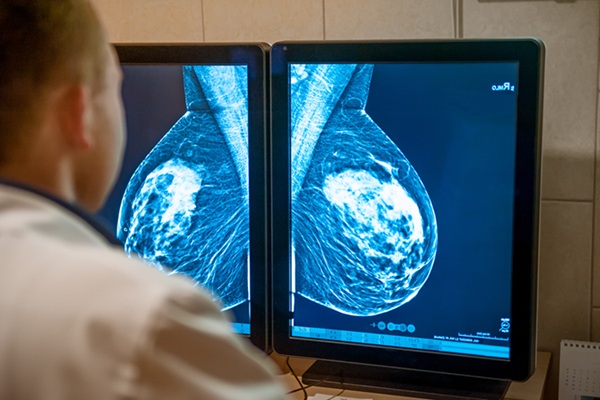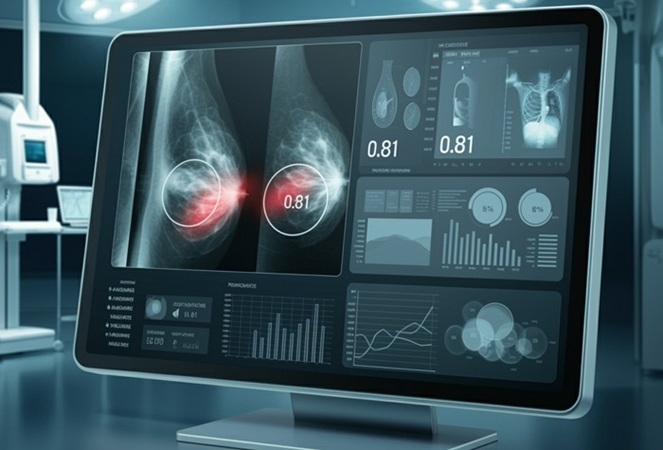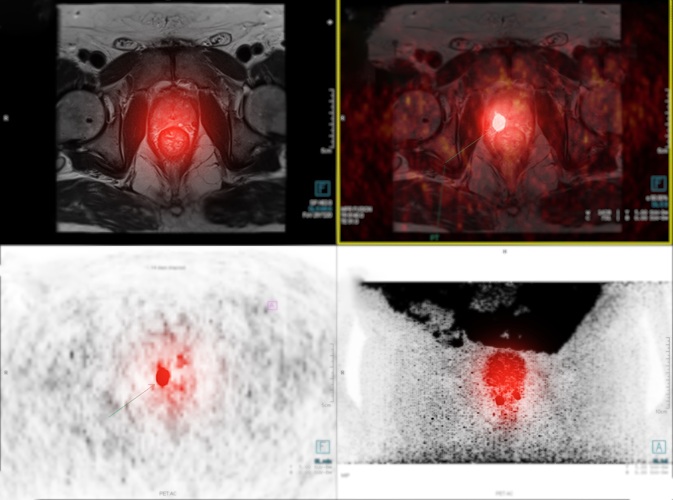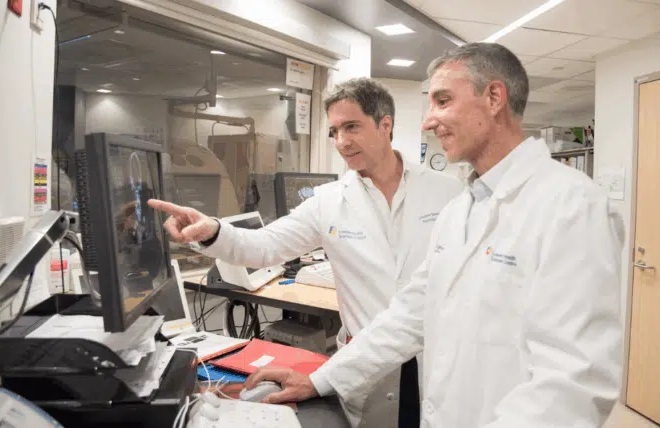Echocardiography Service Automatically Identifies Coronary Artery Disease
|
By MedImaging International staff writers Posted on 21 Jan 2021 |
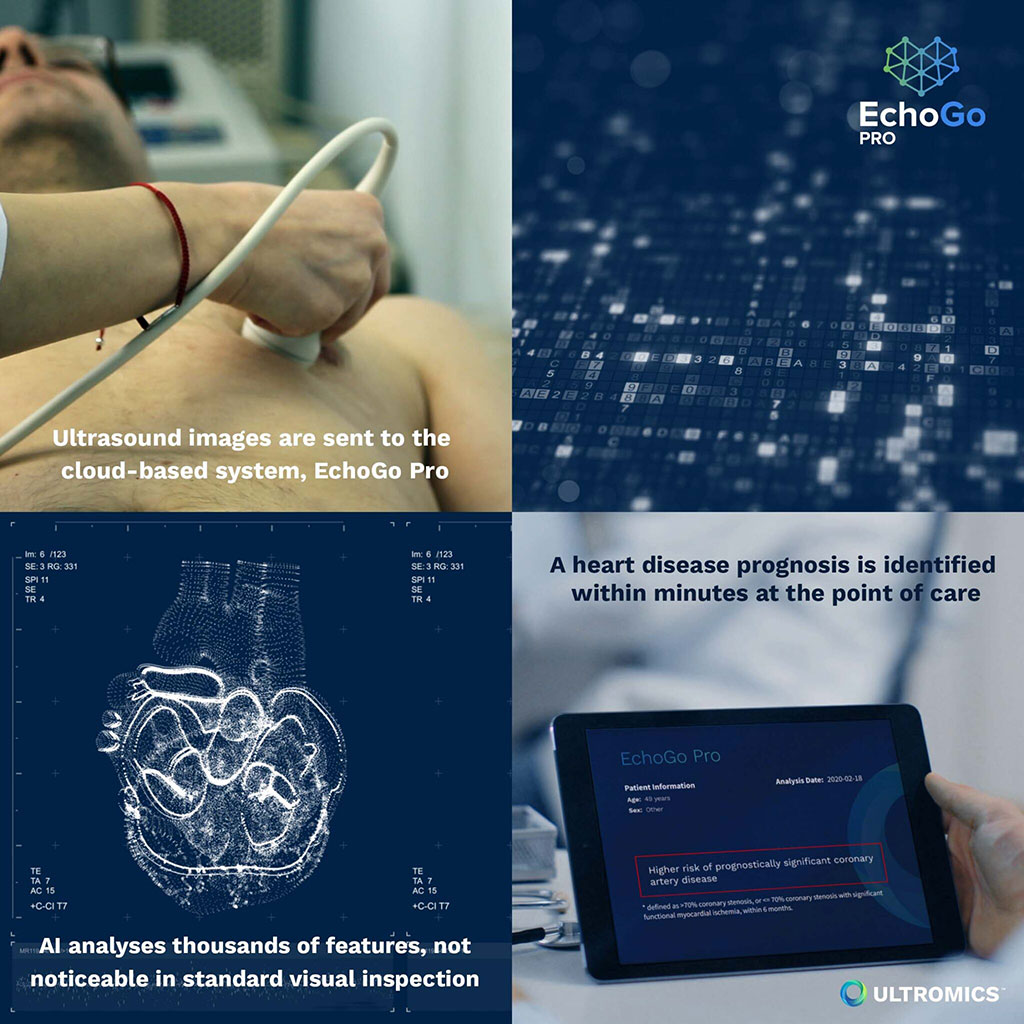
Image: The EchoGo Pro clinical workflows for CAD analysis (Photo courtesy of Ultromics)
An artificial intelligence (AI) powered, outcomes-driven, decision support tool improves the diagnostic accuracy of clinicians for coronary artery disease (CAD).
The Ultromics (Oxford, United Kingdom) EchoGo Pro is a fully automated solution for echocardiography and strain analysis. The cloud-based Software-as-a-Service (SaaS) platform uses AI to power the diagnostic pathway, providing near-instant reports without any need for physical software on site. EchoGo Pro complements EchoGo Core, a software application that measures standard cardiac parameters, including ejection fraction (EF), global longitudinal dtrain (GLS), and left ventricular (LV) volume, and also analyzes echocardiogram (ECG) cardiac parameters.
For Pro, the anonymized echocardiogram dataset is transferred and processed through the application’s workflow, and an auto-contouring algorithm places points around the LV that sufficiently capture the LV shape; these contours are then used for calculating geometric parameters. By automating ECG analysis as part of the cloud service, a complete accurate analysis can be delivered within minutes, and with zero variability, in a zero-click workflow, aiding identification of CAD. EchoGo Pro and EchoGo Core will be offered together in the EchoGo suite.
“Heart disease is the biggest killer globally, and this number is increasing daily. COVID-19 has placed an even greater pressure on cardiac care and looks likely to have lasting implications in terms of its impact on the heart,” said Ross Upton, MD, founder and CEO of Ultromics. “The healthcare industry needs to quickly pivot towards AI powered automation to reduce the time to diagnosis and improve patient care. We are making the EchoGo suite as complete and automated as possible to help clinicians rapidly assess disease and provide early, appropriate intervention.”
Cardiac ultrasound, or echocardiography, is a noninvasive diagnostic modality that can provide detailed hemodynamic information rapidly at the patient bedside. It was first adopted for diagnostic purposes in the 1960s as an inexpensive way to expedite diagnosis and management of imminently life-threatening cardiac disease, including pericardial tamponade, acute coronary syndrome (ACS), cardiomyopathy, pulmonary embolism (PE), and aortic dissection. Cardiac ultrasound can also differentiate shock states and guide resuscitative measures.
Related Links:
Ultromics
The Ultromics (Oxford, United Kingdom) EchoGo Pro is a fully automated solution for echocardiography and strain analysis. The cloud-based Software-as-a-Service (SaaS) platform uses AI to power the diagnostic pathway, providing near-instant reports without any need for physical software on site. EchoGo Pro complements EchoGo Core, a software application that measures standard cardiac parameters, including ejection fraction (EF), global longitudinal dtrain (GLS), and left ventricular (LV) volume, and also analyzes echocardiogram (ECG) cardiac parameters.
For Pro, the anonymized echocardiogram dataset is transferred and processed through the application’s workflow, and an auto-contouring algorithm places points around the LV that sufficiently capture the LV shape; these contours are then used for calculating geometric parameters. By automating ECG analysis as part of the cloud service, a complete accurate analysis can be delivered within minutes, and with zero variability, in a zero-click workflow, aiding identification of CAD. EchoGo Pro and EchoGo Core will be offered together in the EchoGo suite.
“Heart disease is the biggest killer globally, and this number is increasing daily. COVID-19 has placed an even greater pressure on cardiac care and looks likely to have lasting implications in terms of its impact on the heart,” said Ross Upton, MD, founder and CEO of Ultromics. “The healthcare industry needs to quickly pivot towards AI powered automation to reduce the time to diagnosis and improve patient care. We are making the EchoGo suite as complete and automated as possible to help clinicians rapidly assess disease and provide early, appropriate intervention.”
Cardiac ultrasound, or echocardiography, is a noninvasive diagnostic modality that can provide detailed hemodynamic information rapidly at the patient bedside. It was first adopted for diagnostic purposes in the 1960s as an inexpensive way to expedite diagnosis and management of imminently life-threatening cardiac disease, including pericardial tamponade, acute coronary syndrome (ACS), cardiomyopathy, pulmonary embolism (PE), and aortic dissection. Cardiac ultrasound can also differentiate shock states and guide resuscitative measures.
Related Links:
Ultromics
Latest Ultrasound News
- Disposable Ultrasound Patch Performs Better Than Existing Devices
- Non-Invasive Ultrasound-Based Tool Accurately Detects Infant Meningitis
- Breakthrough Deep Learning Model Enhances Handheld 3D Medical Imaging
- Pain-Free Breast Imaging System Performs One Minute Cancer Scan
- Wireless Chronic Pain Management Device to Reduce Need for Painkillers and Surgery
- New Medical Ultrasound Imaging Technique Enables ICU Bedside Monitoring
- New Incision-Free Technique Halts Growth of Debilitating Brain Lesions
- AI-Powered Lung Ultrasound Outperforms Human Experts in Tuberculosis Diagnosis
- AI Identifies Heart Valve Disease from Common Imaging Test
- Novel Imaging Method Enables Early Diagnosis and Treatment Monitoring of Type 2 Diabetes
- Ultrasound-Based Microscopy Technique to Help Diagnose Small Vessel Diseases
- Smart Ultrasound-Activated Immune Cells Destroy Cancer Cells for Extended Periods
- Tiny Magnetic Robot Takes 3D Scans from Deep Within Body
- High Resolution Ultrasound Speeds Up Prostate Cancer Diagnosis
- World's First Wireless, Handheld, Whole-Body Ultrasound with Single PZT Transducer Makes Imaging More Accessible
- Artificial Intelligence Detects Undiagnosed Liver Disease from Echocardiograms
Channels
Radiography
view channel
AI Algorithm Uses Mammograms to Accurately Predict Cardiovascular Risk in Women
Cardiovascular disease remains the leading cause of death in women worldwide, responsible for about nine million deaths annually. Despite this burden, symptoms and risk factors are often under-recognized... Read more
AI Hybrid Strategy Improves Mammogram Interpretation
Breast cancer screening programs rely heavily on radiologists interpreting mammograms, a process that is time-intensive and subject to errors. While artificial intelligence (AI) models have shown strong... Read moreMRI
view channel
AI-Assisted Model Enhances MRI Heart Scans
A cardiac MRI can reveal critical information about the heart’s function and any abnormalities, but traditional scans take 30 to 90 minutes and often suffer from poor image quality due to patient movement.... Read more
AI Model Outperforms Doctors at Identifying Patients Most At-Risk of Cardiac Arrest
Hypertrophic cardiomyopathy is one of the most common inherited heart conditions and a leading cause of sudden cardiac death in young individuals and athletes. While many patients live normal lives, some... Read moreNuclear Medicine
view channel
PET Tracer Enables Same-Day Imaging of Triple-Negative Breast and Urothelial Cancers
Triple-negative breast cancer (TNBC) and urothelial bladder carcinoma (UBC) are aggressive cancers often diagnosed at advanced stages, leaving limited time for effective treatment decisions.... Read more
New Camera Sees Inside Human Body for Enhanced Scanning and Diagnosis
Nuclear medicine scans like single-photon emission computed tomography (SPECT) allow doctors to observe heart function, track blood flow, and detect hidden diseases. However, current detectors are either... Read more
Novel Bacteria-Specific PET Imaging Approach Detects Hard-To-Diagnose Lung Infections
Mycobacteroides abscessus is a rapidly growing mycobacteria that primarily affects immunocompromised patients and those with underlying lung diseases, such as cystic fibrosis or chronic obstructive pulmonary... Read moreGeneral/Advanced Imaging
view channel
New Ultrasmall, Light-Sensitive Nanoparticles Could Serve as Contrast Agents
Medical imaging technologies face ongoing challenges in capturing accurate, detailed views of internal processes, especially in conditions like cancer, where tracking disease development and treatment... Read more
AI Algorithm Accurately Predicts Pancreatic Cancer Metastasis Using Routine CT Images
In pancreatic cancer, detecting whether the disease has spread to other organs is critical for determining whether surgery is appropriate. If metastasis is present, surgery is not recommended, yet current... Read moreImaging IT
view channel
New Google Cloud Medical Imaging Suite Makes Imaging Healthcare Data More Accessible
Medical imaging is a critical tool used to diagnose patients, and there are billions of medical images scanned globally each year. Imaging data accounts for about 90% of all healthcare data1 and, until... Read more
Global AI in Medical Diagnostics Market to Be Driven by Demand for Image Recognition in Radiology
The global artificial intelligence (AI) in medical diagnostics market is expanding with early disease detection being one of its key applications and image recognition becoming a compelling consumer proposition... Read moreIndustry News
view channel
GE HealthCare and NVIDIA Collaboration to Reimagine Diagnostic Imaging
GE HealthCare (Chicago, IL, USA) has entered into a collaboration with NVIDIA (Santa Clara, CA, USA), expanding the existing relationship between the two companies to focus on pioneering innovation in... Read more
Patient-Specific 3D-Printed Phantoms Transform CT Imaging
New research has highlighted how anatomically precise, patient-specific 3D-printed phantoms are proving to be scalable, cost-effective, and efficient tools in the development of new CT scan algorithms... Read more
Siemens and Sectra Collaborate on Enhancing Radiology Workflows
Siemens Healthineers (Forchheim, Germany) and Sectra (Linköping, Sweden) have entered into a collaboration aimed at enhancing radiologists' diagnostic capabilities and, in turn, improving patient care... Read more












